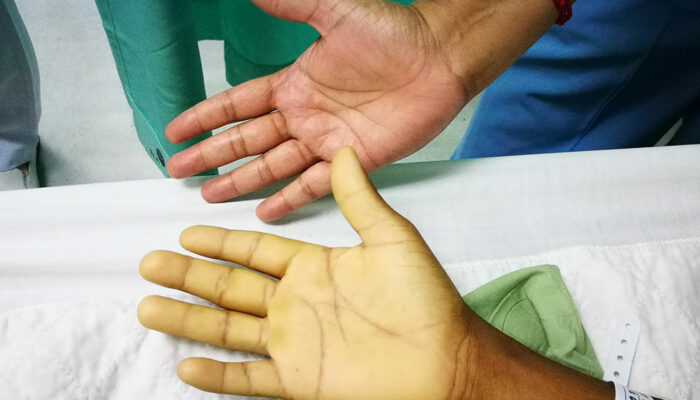
4 Primary Types of Multiple Sclerosis
Multiple sclerosis (MS) affects the peripheral nerves and central nervous system. Its causes are not fully known, and every person with the condition has different symptoms. However, doctors have identified a few types of MS to help determine the severity of the disease and the effectiveness of treatment. For those wondering what the different types of MS are, we’ve listed them below.
1. Clinically Isolated Syndrome (CIS)
CIS identifies as the first type of MS with symptoms that last about 24 hours or more. But these symptoms cannot be linked to fever and infection, among other illnesses, because the symptoms are a result of inflammation or demyelination in the central nervous system. If a person is affected by the clinically isolated syndrome, it could mean two things. One, they may never experience another episode. Or two, the episode may be a prequel to forthcoming multiple sclerosis attacks. An MRI helps predict the odds. If a person has brain lesions similar to those in people with MS, there’s a 60 to 80 percent chance of recurring symptoms.
2. Relapsing-Remitting Multiple Sclerosis (RRMS)
It is the most common type of MS and accounts for 80 to 85 percent of the initial diagnosis of the condition. A person affected by RRMS will notice the first signs in their early 20s. Its signs are followed by a series of symptoms (relapses) that occur from time to time. These symptoms require prolonged recoveries (remissions) that can span anywhere from weeks to years. A person with recurring MS symptoms will eventually enter the secondary progressive phase of the condition. Understand that in RRMS, the severity of the disease, degree of recovery, nerve damage, and time between relapses will differ from one person to the next.
3. Secondary Progressive MS (SPMS)
Secondary progressive multiple sclerosis identifies as the next stage in people previosly affected by RRMS. Around half of all people diagnosed with RRMS will develop SPMS within 10 years, and 90 percent within 25 years. Once a patient moves to this phase, the nerve-damage mechanism changes. Inflammation goes down, but the functionality of the nerves gradually declines. Someone with secondary progressive MS will find it hard to use their body the way they used to. Also, its treatment isn’t easy, which makes the diseases harder to handle each day.
4. Primary-progressive MS (PPMS)
Primary-progressive MS, earlier known as progressive-relapsing multiple sclerosis, is not as common as the other types and accounts for 10 to 15 percent of all MS cases. People affected by PPMS will notice that the neurological function is impaired. This function only deteriorates as the disease progresses. However, the rate of progression of the disease varies, and sometimes even minor improvements are noticed, with no relapses. Generally, people are older than 40 when they get diagnosed with primary progressive multiple sclerosis.



